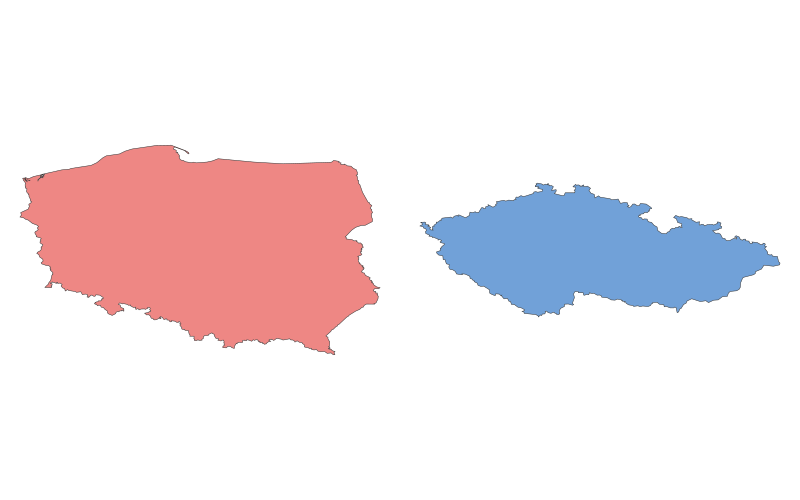Polônia vs. República Tcheca: Uma Comparação Geográfica

Polônia vs. República Tcheca: Uma Comparação Geográfica
Tabela Comparativa
| Categoria | Polônia | República Tcheca |
|---|---|---|
| Localização | Europa Central, banhada pelo Mar Báltico | Europa Central, sem saída para o mar |
| Área | 312.696 km² | 78.867 km² |
| Clima | Temperado continental | Temperado continental |
| Recursos Naturais | Carvão, cobre, prata, enxofre | Carvão, grafite, madeira, urânio |
| Desenvolvimento Urbano | Varsóvia, Cracóvia, Wrocław | Praga, Brno, Ostrava |
| Transporte | Rede ferroviária extensa, aeroportos internacionais | Sistema ferroviário eficiente, transporte público em Praga |
Descrição Detalhada
Polônia
A Polônia é um país da Europa Central, conhecido por sua rica história e cultura. Com uma área de 312.696 km², é um dos maiores países da região. Sua capital, Varsóvia, é um importante centro econômico e cultural. A Polônia possui um clima temperado continental, com invernos frios e verões amenos.
A economia polonesa é diversificada, com destaque para a indústria, agricultura e serviços. O país é rico em recursos naturais, como carvão e cobre. Culturalmente, a Polônia é famosa por sua música, literatura e tradições católicas.
República Tcheca
A República Tcheca, também localizada na Europa Central, é um país menor em comparação à Polônia, com 78.867 km². Sua capital, Praga, é um dos destinos turísticos mais populares da Europa, conhecida por sua arquitetura histórica.
O clima é semelhante ao da Polônia, com invernos frios e verões quentes. A economia tcheca é altamente industrializada, com ênfase em automóveis, máquinas e eletrônicos. Culturalmente, o país é conhecido por sua cerveja, música clássica e festivais tradicionais.
Ambos os países compartilham uma história complexa, marcada por influências germânicas, eslavas e austro-húngaras, e são membros da União Europeia e da OTAN.